opening hours
Monday closed
Tuesday to Sunday 11 am – 7 pm
Monday 8 December 11 am > 7 pm
Wednesday 24 December 11 am > 4:30 pm
Thursday 25 December closed
Wednesday 31 December 11 am > 4:30 pm
Thursday 1 January 11 am > 7 pm
Monday 5 January 11 am > 7 pm
Tusday 6 January 11 am > 7 pm
- full price € 15 at the box office - € 14 online
- reduced price € 12 at the box office - € 11 online
– for young people aged between 18 and 25 (not yet turned 25);
– for groups of 15 people or more;
– La Galleria Nazionale, Museo Ebraico di Roma ticket holders;
– upon presentation of ID card or badge: Accademia Costume & Moda, Accademia Fotografica, Biblioteche di Roma, Centro Sperimentale di Cinematografia, Enel (for badge holder and accompanying person), FAI Fondo Ambiente Italiano, Feltrinelli, Gruppo FS, IN/ARCH Istituto Nazionale di Architettura, Sapienza Università di Roma, LAZIOcrea, Palazzo delle Esposizioni, Amici di Palazzo Strozzi, Accademia Nazionale di Santa Cecilia, Scuola Internazionale di Comics, Teatro Olimpico, Teatro dell’Opera di Roma, Teatro di Roma, Università degli Studi di Roma Tor Vergata, Youthcard; - open € 18
valid for one year from the date of purchase
- free
– minors under 18 years of age;
– myMAXXI cardholders;
– on your birthday presenting an identity document;
– upon presentation of EU Disability Card holders and or accompanying letter from hosting association/institution for: people with disabilities and accompanying person, people on the autistic spectrum and accompanying person, deaf people, people with cognitive disabilities and complex communication needs and their caregivers, people with serious illnesses and their caregivers, guests of first aid and anti-violence centres and accompanying operators, residents of therapeutic communities and accompanying operators;
– MiC employees;
– journalists who can prove their business activity;
– European Union tour guides and tour guides, licensed (ref. Circular n.20/2016 DG-Museums);
– 1 teacher for every 10 students;
– AMACI members;
– CIMAM International Committee for Museums and Collections of Modern Art members;
– ICOM members;
– from Tuesday to Friday (excluding holidays) European Union students and university researchers in art history and architecture, public fine arts academies (AFAM registered) students and Temple University Rome Campus students;
– IED Istituto Europeo di Design professors, NABA Nuova Accademia di Belle Arti professors, RUFA Rome University of Fine Arts professors;
– upon presentation of ID card or badge: Collezione Peggy Guggenheim a Venezia, Castello di Rivoli Museo d’Arte Contemporanea, Sotheby’s Preferred, MEP – Maison Européenne de la Photographie;
Robert Wilson. Mother
- ticket € 5
limited seating; it is mandatory to arrive at the infopoint 15 minutes before the start time indicated on the ticket; the experience lasts approximately 45 minutes
- Mother + Museum ticket € 17
limited seating; it is mandatory to arrive at the infopoint 15 minutes before the start time indicated on the ticket; the experience lasts approximately 45 minutes
Collection
MAXXI’s Collection of Art and Architecture represents the founding element of the museum and defines its identity. Since October 2015, it has been on display with different arrangements of works.





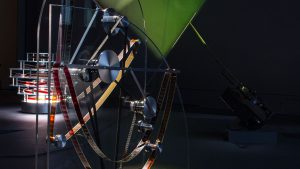

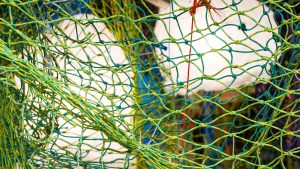


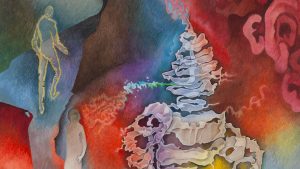
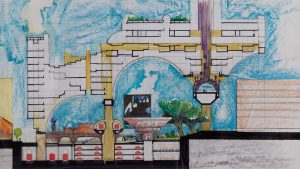
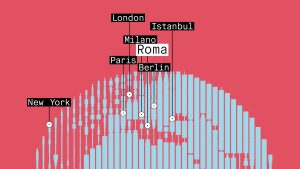



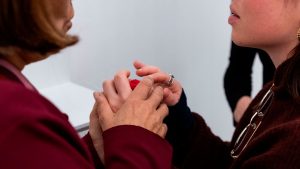














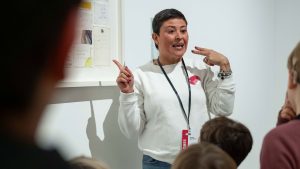



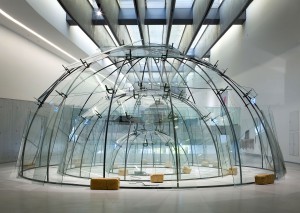










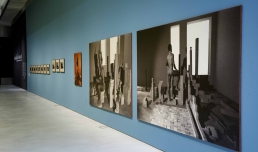


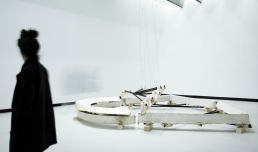




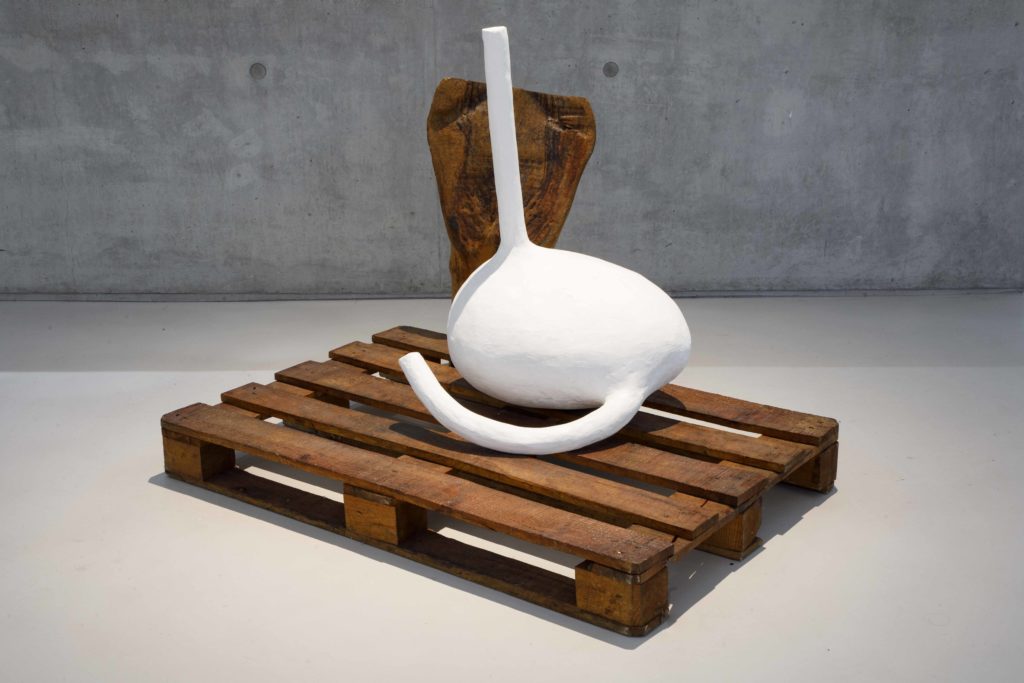
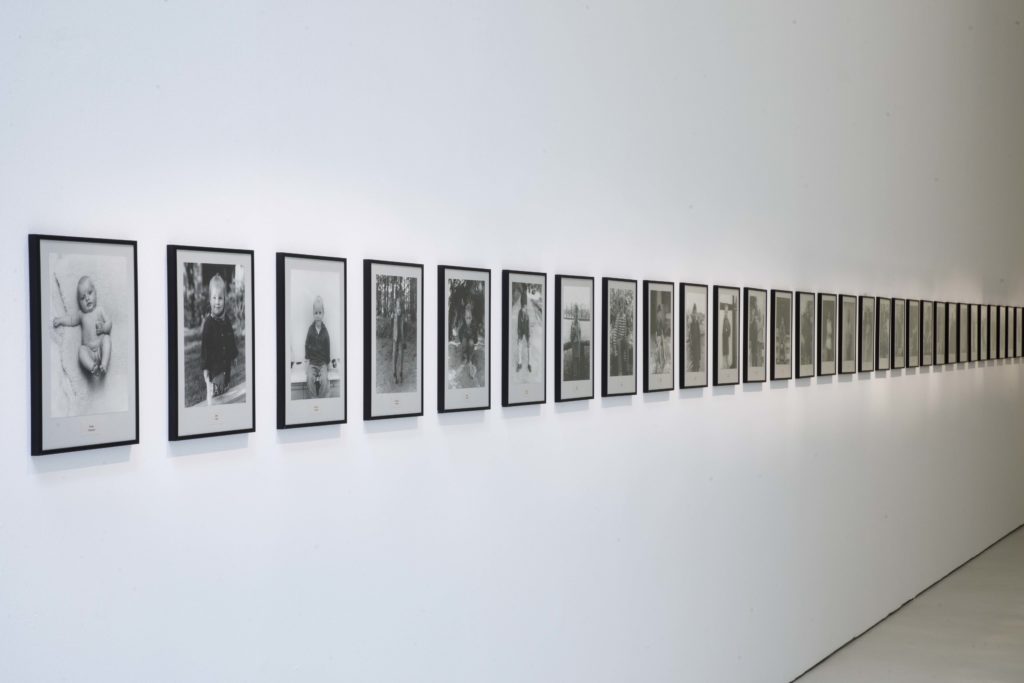






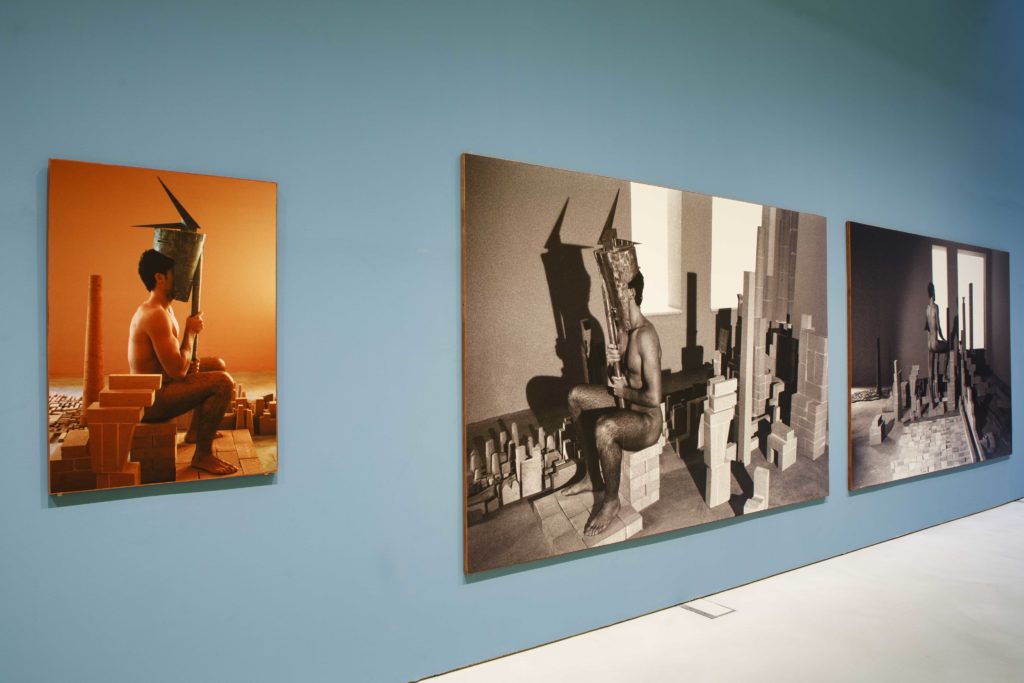




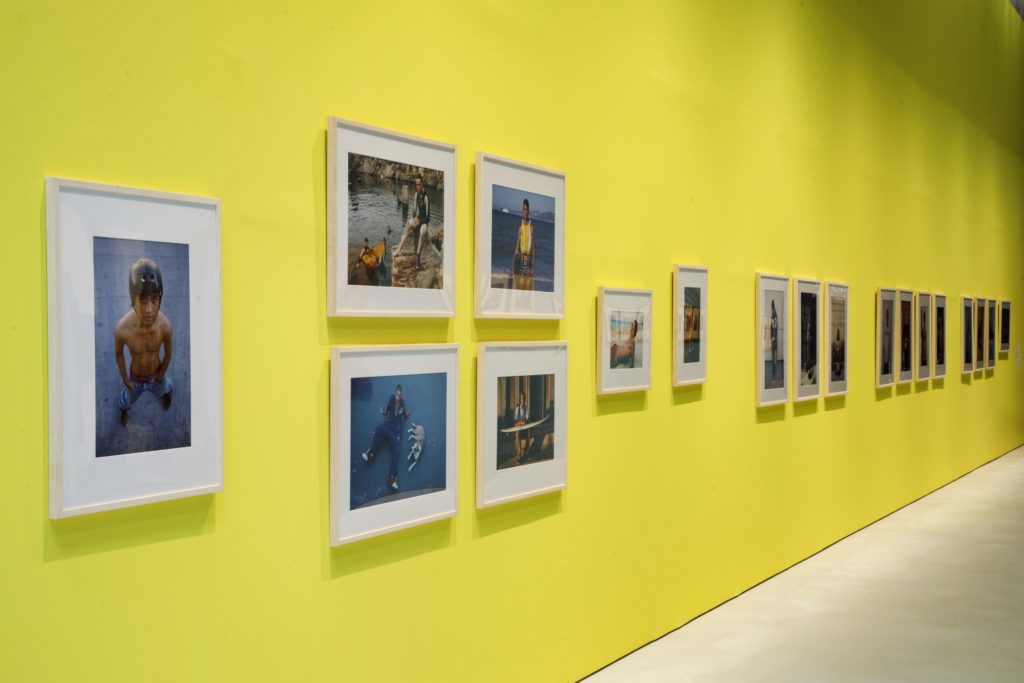



Gallery 4
curated by Hou Hanru with Chiara Bertini
The masterpieces of the IVAM collection at MAXXI
This exhibition is a part of Expanding The Horizon, the programme dedicated to the development of international partnerships between the museum, other cultural institutions and private collections.
On this occasion MAXXI is hosting a number of works from the collection of the Institut Valencià d’Art Modern, one of the most important modern art museums in Spain, which houses masterpieces of Spanish and international art.
The exhibition takes its title from a 1986 work by the famous Spanish artist Juan Muñoz, Al norte de la tormenta. Also featured are works by, among others, Bruce Nauman, Robert Rauschenberg,Tony Cragg, Antoni Tàpies, Cristina Iglesias, Susana Solano and Ángeles Marco.
2020 will see works from the MAXXI collection exhibited in the IVAM spaces.
Juan Muñoz, Al norte de la tormenta, 1986. Courtesy IVAM, Institut Valencià d’Art Modern
IVAM COLLECTION ON DISPLAY
Pedro Cabrita Reis
Eduardo Chillida
Tony Cragg
Hans-Peter Feldmann
Cristina Iglesias
Manolo Laguillo
Ángeles Marco
Allan McCollum
Juan Muñoz
Bruce Nauman
Miquel Navarro
José Antonio Orts
Robert Rauschenberg
Susana Solano
Antoni Tàpies
Miguel Trillo
Richard Tuttle
Eulalia Valldosera